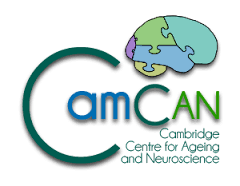CBSU bibliography search
To request a reprint of a CBSU publication, please
click here to send us an email (reprints may not be available for all publications)
When does thought equal action? The unusual case of (probable) persistent vegetative state
Authors:
OWEN, A.M.
Reference:
in W. Printz and N. Sebanz (Eds). Disorders of Volition
Year of publication:
2006
CBU number:
5710
Abstract:
The idea that the frontal cortex is important for intended actions is not a new one, although the precise nature of this involvement has been neither behaviourally, nor anatomically, well specified. As early as 1922, Bianchi (Bianchi, 1922) suggested that the frontal lobes are involved in controlling behaviour, while the neuropsychological literature throughout the last century is filled with descriptions of frontal-lobe patients that imply an impairment of intended actions, but lack testable, well-specified components. For example, terms such as ‘planning’ (Owen et al., 1990; Shallice, 1982, 1988), ‘temporal structuring of behaviour’ (Fuster, 1997) ‘monitoring or manipulation in working memory’ (Owen, 1997; Petrides, 1994) and the ‘control of behaviour by context’ (Cohen and Servan-Schreiber, 1992), have often been used to describe the behaviour of these patients. In this chapter, I will review recent evidence that suggests that the mid-ventrolateral region of the frontal cortex, which in humans lies below the inferior frontal sulcus, is important for intended action; that is, any behaviour (e.g. an action or a thought), that is consciously willed by the agent responsible for carrying out that behaviour. Data from both neuropsychological investigations in patients and functional neuroimaging studies in healthy volunteers will be discussed, as well as relevant evidence from lesion and electrophysiological studies in the macaque
CHAPTER CHANGED IN CONTENT, REWRITTEN AS CBU 5849
This is not a valid reference but kept in due to it being reported in HPR 48.

 MRC Cognition and Brain Sciences Unit
MRC Cognition and Brain Sciences Unit

